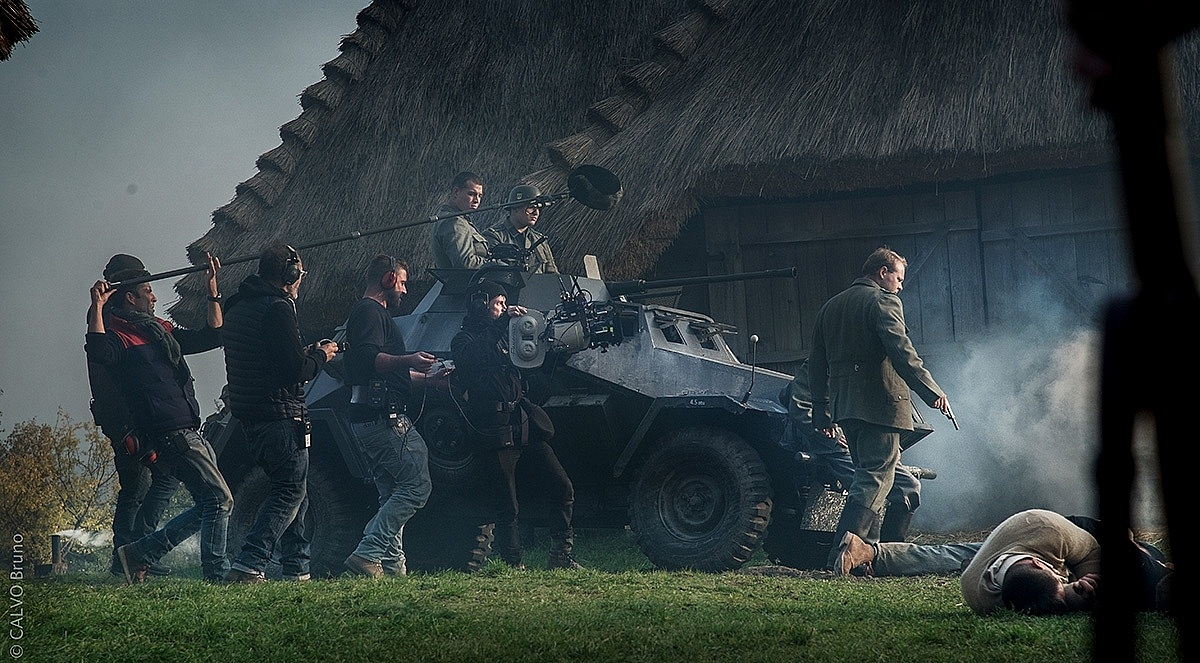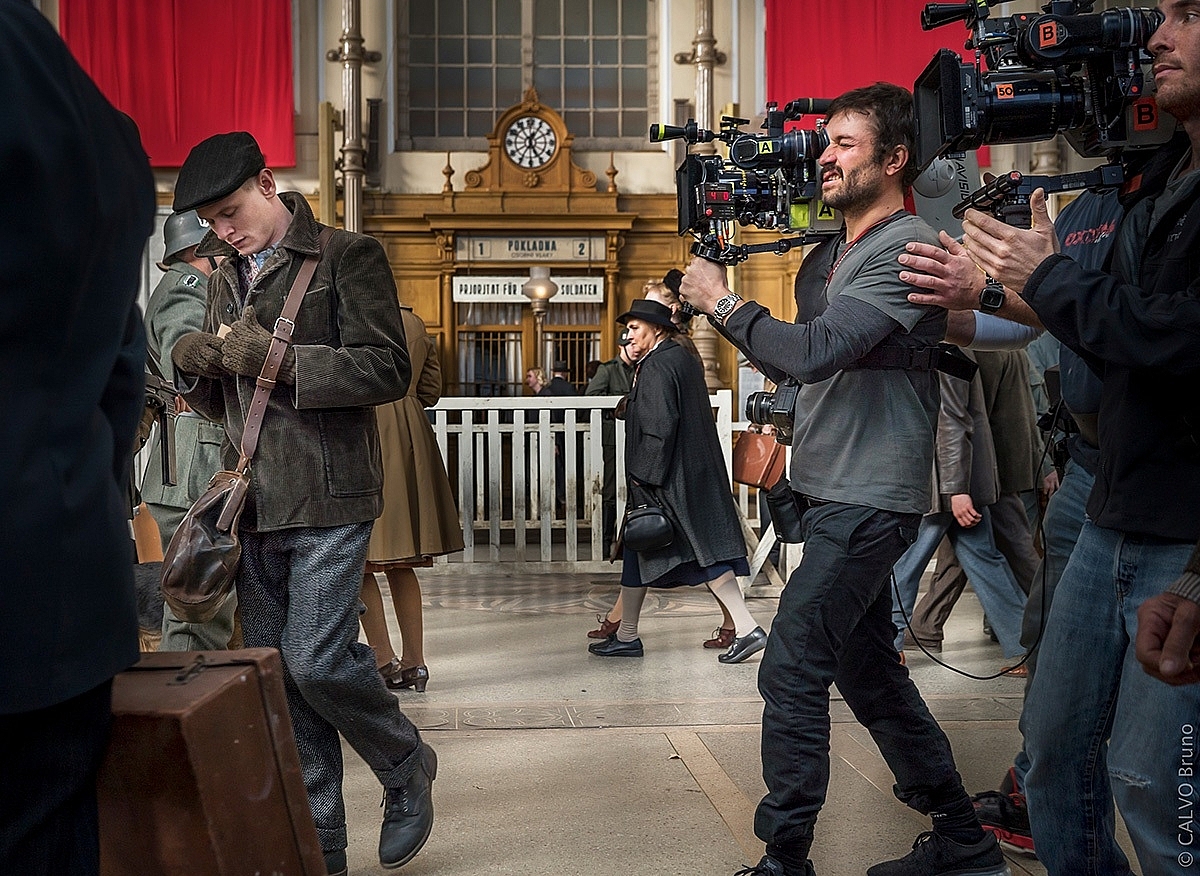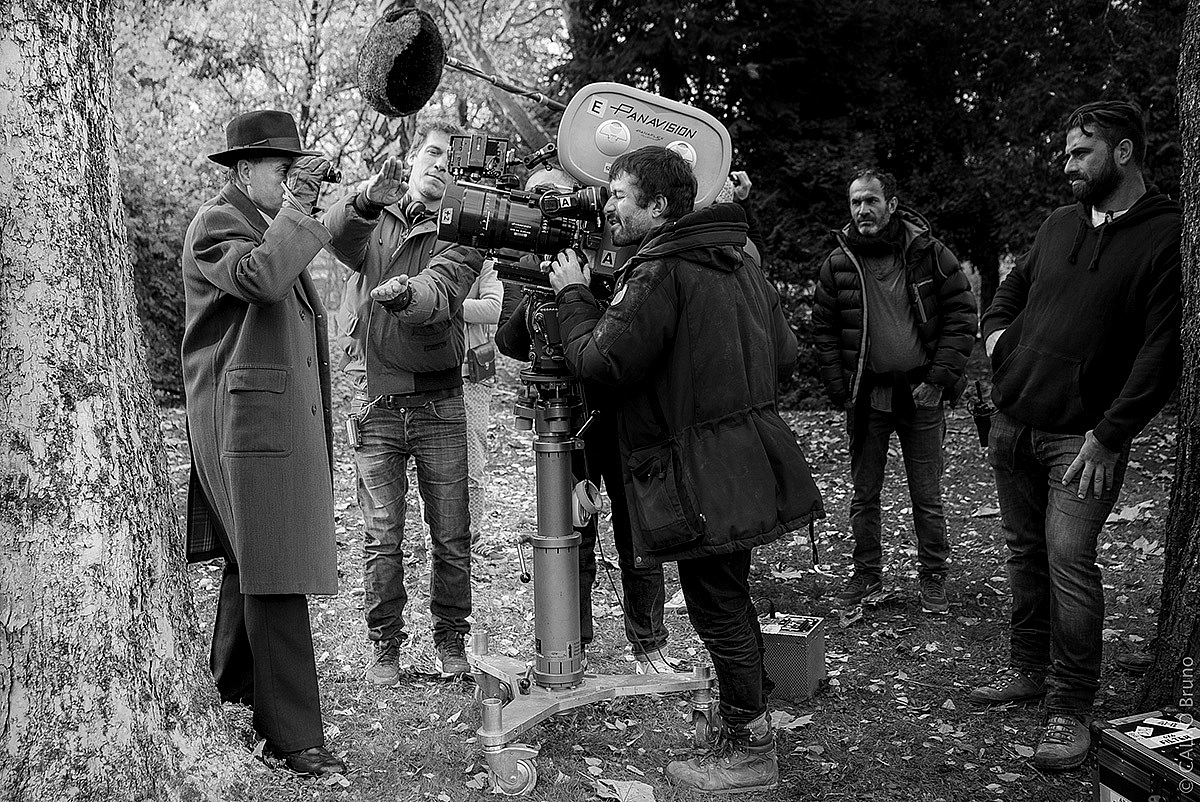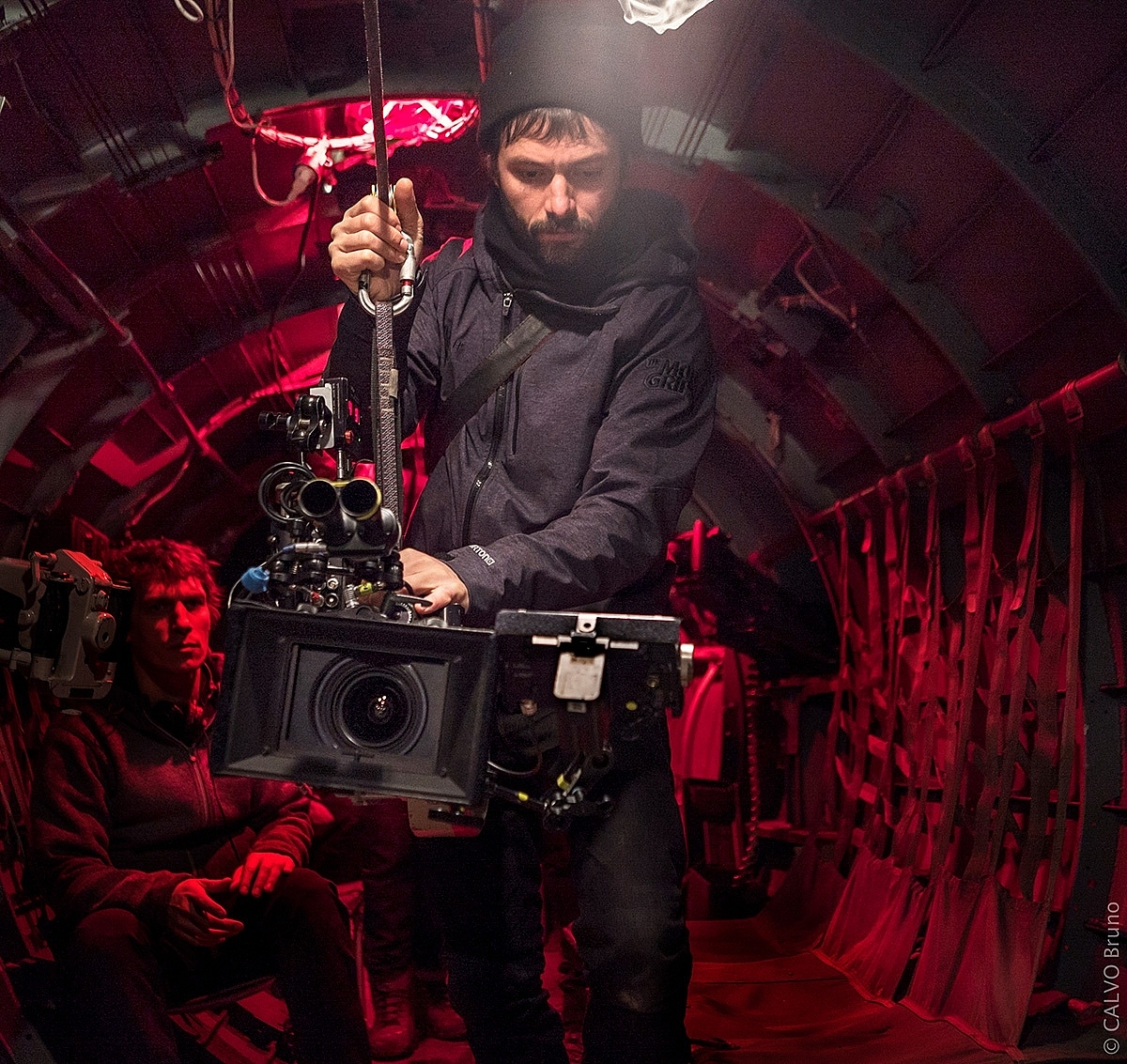Kodak 35mm delivers the emotional and cinematic canvas for WWII thriller 'The Man with the Iron Heart'

L-R: key grip Hans Reynard, focus puller Fabrice Bismuth, boom operator Laurent Cercleux, and cinematographer Laurent Tangy operating the 35mm film camera, on Netflix’s "The Man With The Iron Heart." Photo by: Bruno Calvo
Having previously teamed up to shoot the acclaimed period crime drama, The Connection (La French) (2014) on Kodak 35mm, director Cédric Jimenez and cinematographer Laurent Tangy AFC once again selected film as the visual platform for the WWII action-thriller The Man with the Iron Heart.
Set in occupied Czechoslovakia in 1942, The Man with the Iron Heart tells the story of Operation Anthropoid, the secret mission to assassinate Nazi leader SS General Reinhard Heydrich, known as the “Butcher Of Prague”, with the aim of seriously disrupting his brutal Final Solution for Jews living across Europe and sending a shockwave through the Nazi regime that the resistance movement was alive.
Based on Laurent Binet’s award-winning novel about the operation, entitled HHhH, the film stars Jason Clarke as Heydrich, Rosamund Pike as his wife Lina, with Jack O'Connell and Jack Reynor playing the avenging Czech assassins Jan Kubiš and Josef Gabcík.

Cinematographer Laurent Tangy operates A-camera, with Marco Graziaplena on B-camera, shooting actor Jake O’Connell who stars in Netflix’s "The Man With The Iron Heart." Photo by: Bruno Calvo.
“Cédric wanted an emotional, engaging and cinematic canvas on which to tell this incredible historical story, and film comes with these qualities as standard,” Tangy said. “The beauty of film is that you can put a camera in a street, with no light, and the result is already cinema. Cédric’s vision was to focus on, and stay with, the characters, so that the story of this daring assassination plot was told through the nuances of the actors’ performances and their points-of-view. We necessarily were going to be close-up on faces, and skin tones would be important. It would have been much harder to do this in digital and make it look convincing. As we had already successfully captured the spirit of the 1970s on 35mm for La French, once again, film was the best option to evoke both the period and convey the emotions.”
Having absorbed himself in the script and Binet’s novel, and imbibed a plethora of photographic stills from the actual period, Tangy says he did not feel the need to consider other artistic references when contemplating the look of the film.
“Our plan was to avoid any stylization, to keep the look natural and simple, and to let the inherent texture of film enhance the wardrobe, uniforms and locations to create the period aesthetic,” he explained. “We decided that a fluid shooting style – mainly handheld, and sometimes with a gyro-stabilized camera – both observing and moving with the actors, would deliver emotional engagement.”
Accordingly, Tangy, who operated A-camera during production, selected the lightweight Panavision XL camera with spherical Primo Classic series lenses, framing in 2.35:1 aspect ratio.
He explained, “Anamorphic was an option we considered, but as these camera packages are heavier and the minimum focus is longer, it was a more practical option to shoot spherical. This combination still gave us a cinematic widescreen format and enabled Cédric and I to play with different compositions of single and multiple characters in frame with action in the backgrounds.”
Principal photography on The Man with the Iron Heart took place in urban and countryside locations around Budapest, Hungary, starting mid-September 2015 and concluding 75 days later. A week was also spent in a water tank at MaFilm Studio in Budapest to film a suspenseful re-enactment of a shoot-out that took place in the crypt of Saints Cyril and Methodius Cathedral, which the Nazi’s flooded with water to flush out the assassins.

Director Cedric Jimenez (clapping), with Laurent Tangy operating the 35mm film, plus first AD Fabien Verges (middle) and key grip Hans Reynard (right) on Netflix’s "The Man With The Iron Heart." Photo by: Bruno Calvo.
The Man with the Iron Heart was predominantly a two-camera shoot, with Marco Graziaplena operating B-camera, although the camera count often swelled to as many as five during set-piece action sequences.
Tangy selected Tungsten film stocks for the shoot, using KODAK VISION3 500T Color Negative Film 5219 for all of the night and interior scenes, and VISION3 200T Color Negative Film 5213 for the day exteriors.
“I love the pleasing, natural color palette of both these Tungsten stocks and the extraordinary way they capture skin tones,” Tangy remarked. “They also have the latitude to easily handle the dynamic range of a scene that contains both highlights and shadows, and they really match well together, too.”
Around 35% of the movie was shot either in the dark or at night, and Tangy said this was where film really came into its own.
“Unlike digital, where the camera sees everything and your challenge is constantly having to remove light from a scene, with film you start from black and light only what you want to see, which is crucial when you are creating your own particular atmospheric aesthetic,” he said.
The team at Hungarian Film Lab in Budapest was responsible for the negative processing and dailies, whom Tangy says were very efficient and made for a rewarding experience.
In keeping with the desire for naturalism, Tangy supplemented available light when necessary with soft, bounced Tungsten lighting off walls and ceilings on to the actors. Soft top lighting was deployed on the longer running action scenes when the cameras needed 360-degree freedom of movement.

Director Cedric Jimenez (in the red light), with cinematographer Laurent Tangy operating the 35mm film camera on Netflix’s "The Man With The Iron Heart." Photo by: Bruno Calvo.
Tangy said that discipline of shooting on film had a positive effect across the cast, crew and the extras. “Film is important and a precious resource. Unlike digital, where there can often be a tendency to keep the cameras rolling, the film camera demands discipline. It keeps everyone motivated and focused on giving their best to their individual tasks. This was especially important during action scenes, which we filmed with multiple cameras in long takes. During the resets everyone could absorb Cédric’s direction and prepare themselves for the next take.”
He concluded, “Overall, one of the biggest issues with shooting digital is that more and more the results look the same. Film is more versatile by nature. The inherent value of grain and texture automatically give you a cinematic platform to create and control your own distinctive visuals. Ultimately, it is easier to watch and to believe in the story when you shoot on film. I am very proud of the natural cinematic result we achieved by shooting The Man with the Iron Heart on Kodak. It’s a full-on, exciting drama that audiences will really engage with.”